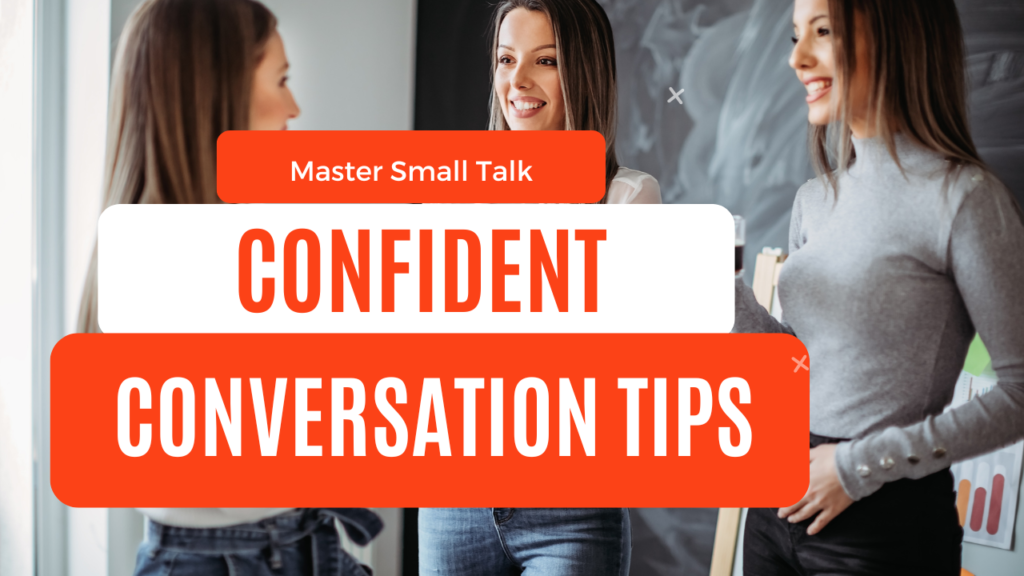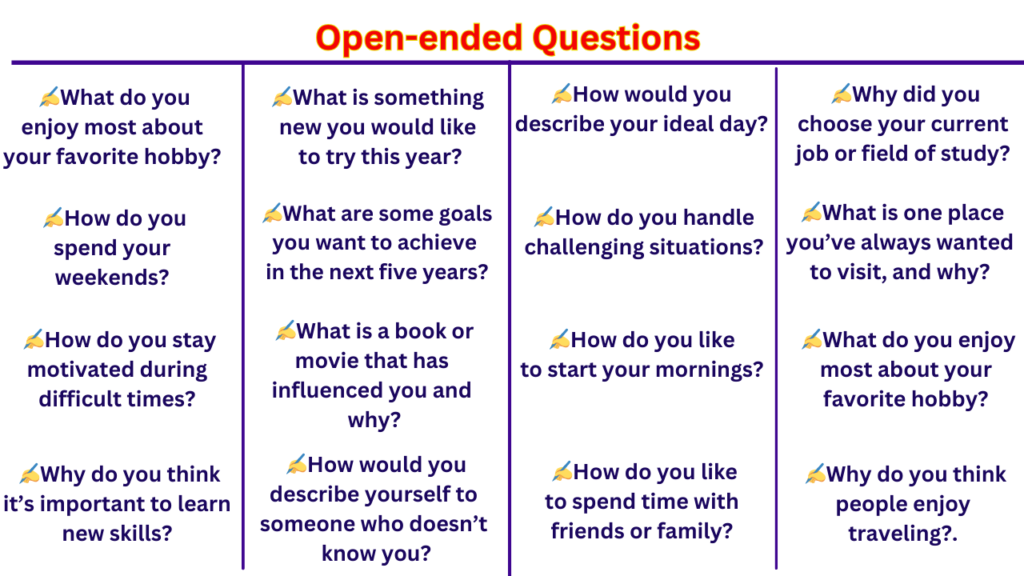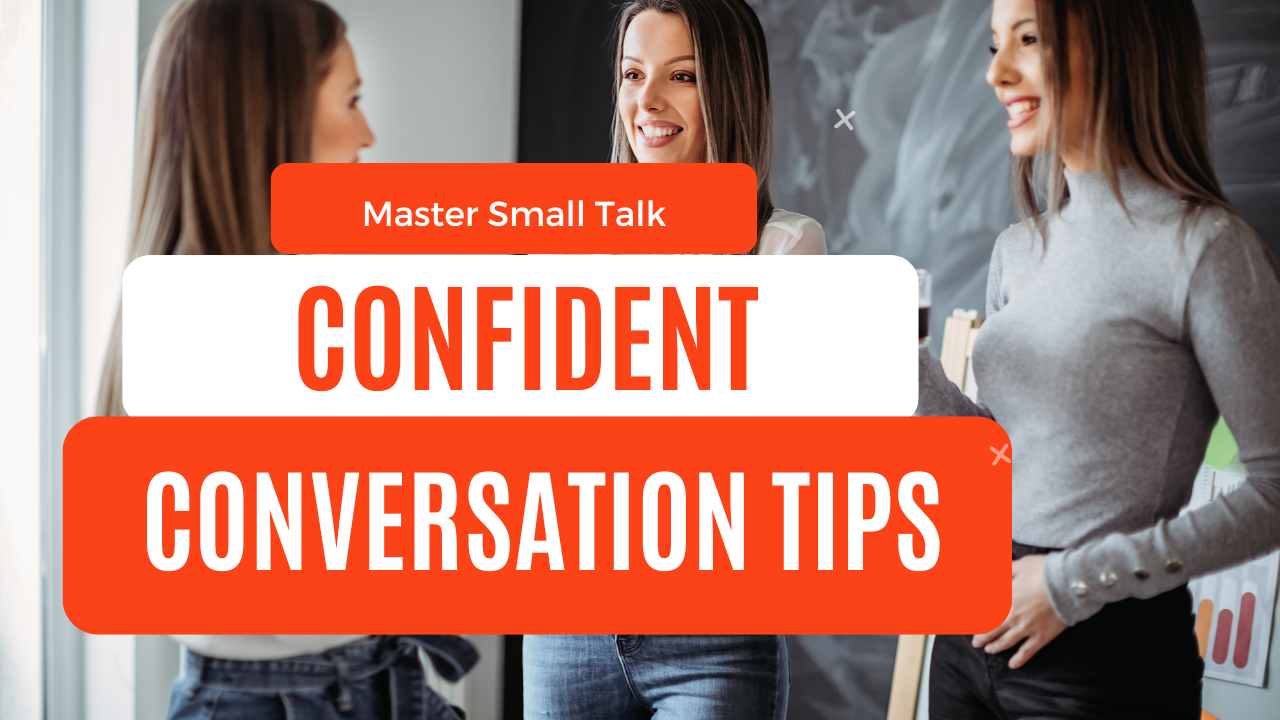Confident Small Talk in English: Simple Tips to Keep Conversations Flowing

Introduction:
Small talk can seem difficult, particularly if you’re anxious about uncomfortable silences or being at a loss for words. However, don’t worry! When you master small talk, you unlock the potential for meaningful connections, networking opportunities, and enjoyable social interactions. In this blog post, we will share practical tips and strategies to help you start conversations with confidence and smoothly handle awkward moments.
Why Small Talk Matters:
Small talk is the basis for forming relationships. It initiates deeper conversations and connections in both personal and professional contexts. Whether at a party, a networking event, or meeting new people, small talk breaks the ice and leads to more meaningful interactions.
Strategies for Initiating Small Talk:
These simple strategies can make it easier, for you, to start conversation with someone you are not familiar with:
1. Use Open-Ended Questions
Open-ended questions promote detailed responses and maintain the conversation’s momentum. Rather than asking yes/no questions, try asking, “What do you enjoy doing in your free time?” This encourages the other person to share more about their interests.

2. Comment on Your Surroundings
Observing and commenting on your surroundings is a simple way to initiate a conversation. For instance, at a conference, you could say, “The keynote speaker’s insights on technology are fascinating. What are your thoughts?”
3. Share a Fact or Observation
Sharing an interesting tidbit or a fun fact can capture someone’s attention. For instance, “Did you know this cafe sources its beans from a small farm in Brazil?” This can spark a conversation about coffee, travel, or similar topics.
4. Compliment Sincerely
A genuine compliment can be a great icebreaker. It shows you’ve noticed something positive about the person. For example, “I love your scarf – it’s such a beautiful color!” This can lead to a conversation about fashion, colors, or shopping preferences.
5. Find Common Ground
Seek out shared interests or experiences. At a company event, you could ask, “How long have you been working here?” Discovering common ground helps build rapport and makes the conversation more enjoyable.

Overcoming Fear of Awkward Silences:
Everyone experiences awkward silences, but they must not disrupt your conversation. Here are some tactics to manage them:
1. Prepare Topics in Advance
Preparing a few topics or questions in advance can serve as a backup if the conversation slows down. Consider discussing current events, local activities, or inquiring about the other person’s interests.
2. Embrace the Pause
Silences aren’t always negative; they can be natural in conversation. Take a breath and allow the other person a moment to think and reply. Sometimes, a brief pause can lead to deeper and more thoughtful discussion.
3. Keep it Light
If the conversation slows down, guide it toward lighter subjects such as hobbies, movies, or food preferences. People find these topics more comfortable and enjoyable, to talk about.
4. Active Listening in conversations
Practicing active listening demonstrates genuine interest and enables you to recognize cues to keep the conversation going. Nodding, maintaining eye contact, and offering verbal affirmations such as “I understand” or “That’s fascinating!” encourages the speaker to elaborate and helps you formulate follow-up questions.
5. Laugh it Off
If you encounter an awkward silence, feel free to lighten the mood with a smile and a casual remark such as, “Seems like we’ve both run out of topics!” This can relieve tension and restart the conversation.

Conversing with Confidence:
Being able to have small talk naturally, is a matter of practice. Here are some tips to build your confidence in social situations:
1. Role Play
Practice with a friend or family member by role-playing various situations. This can boost your confidence and readiness for actual conversations.
2. Small talk for beginners
Start with more familiar settings, such as chatting with a cashier or neighbor. As you become more confident, progress to more demanding situations.
3. Focus on the Other Person
Redirect your attention from your own nervousness to a sincere interest in the other person. When you are genuinely engaged, awkwardness tends to diminish.
4. Reflect and Learn
After conversations, take a moment to review what went smoothly and areas for improvement. Use these insights as learning experiences for future interactions.
Examples of small talk in different scenarios:
1. Social Gatherings
Scenario: You’re at a friend’s party and you don’t know many people.
Example :
You: “I’ve known [Host’s Name] for a while now. They’re such a great person—always throwing these awesome parties.”
New Person: “I totally agree. I’ve only known them a short time, but they’ve been quite welcoming.”
You: “Same here. You can tell they put a lot of thought into making sure everyone has a good time.”
2. Professional Networking Event
Scenario: You’re at a networking event with colleagues from different companies.
Example :
Person A: “Hi there! I’m Smita. It’s nice to meet you.”
Person B: “Hi Smita, I’m Ravi. Great to meet you, too. Have you been to this event before?”
Sarah: “Yes, actually, I try to attend each year. It’s always a great chance to connect with others in the industry. How about you?”
Alex: “It’s my first time here! I’ve heard so many good things about it, so I thought I’d check it out.”
3. Waiting Room or Queue
Scenario: You’re waiting in line at the coffee shop or a doctor’s office.
Example :
Person A: “Looks like it’s a busy day here!”
Person B: “Yeah, I didn’t expect the line to be this long. Do you come here often?”
Person A: “Every now and then. They have great coffee, so it’s worth the wait. How about you?”
Person B: “First time here, actually. I’ve heard good things!”
Person A: “Oh, you’ll love it! The cappuccino is amazing.”
Person B: “Sounds great, I’ll give it a try. Thanks for the tip!”
4. At the Gym
Scenario: You’re working out at the gym and see someone on the same equipment.
Example:
Person A: “Hey, I see you here pretty often. Are you training for something specific?”
Person B: “Oh, not really—just trying to stay in shape! How about you?”
Person A: “Same here. It’s a good stress reliever after work.”
Person B: “Totally agree. By the way, your form on those squats is solid!”
Person A: “Thanks! Let me know if you ever want to exchange workout tips!”
5. Airplane or Public Transport
Scenario: You’re seated next to someone during a long flight or bus ride.
Example:
Person A: “Heading home or off on vacation?”
Person B: “Vacation! Just a quick getaway. You?”
Person A: “Business trip, actually. Hoping to go sightseeing.”
Person B: “Nice! Hope you get the chance. Safe travels!”
6. Community Events
Scenario: You’re at a local community event like a farmers’ market or a fair.
Example:
Person A: “So crowded today! Have you tried any of the chaat yet?”
Person B: “Yes, I just had the pani puri. It’s amazing! You should try it.”
Person A: “Sounds tempting! Any stalls you’d recommend?”
Person B: “The kulfi stall near the entrance is really good. Perfect for this weather!”
Overcoming Awkward Silences: Real-Life Example
Scenario: You experience a brief silence after the initial small talk.
Example:
Person A: “So… do you come here often?”
Person B: “Not really, just once in a while. How about you?”
Person A: “Same here! It’s nice to change things up a bit.”
Person B: “Yeah, absolutely. By the way, have you checked out any other events around here?”
Practicing and Learning from Conversations
Scenario: After a conversation, you reflect on what worked and where you could improve.
Example:
I think the conversation went well, especially when I asked open-ended questions. I noticed they seemed more interested when I shared a bit about myself, too. Next time, I’ll try to avoid silences and just let the conversation pace itself naturally
Improving Small Talk Skills with Confidence
1. Choose Common Topics
Choosing common topics can ensure maximum participation. Also, one can practice a wide range of vocabulary and a variety of expressions. Also, choose a topic keeping in mind the interest of the person you are speaking to.
For instance, if you’re at a social gathering during monsoon season, you could say, “The rain has been relentless this week! Do you enjoy the monsoons, or do you find them inconvenient?”
2. Show Genuine Interest
Listening attentively to others and showing curiosity in their speech can help you getting them engaged in the conversation. For example, if someone mentions they recently attended a wedding, follow up with, “Indian weddings are always so grand. Was it a traditional ceremony? What was the highlight for you?”
3. Master the Art of Compliments
Giving compliments is an excellent way to start small talk. For example, at a festival like Diwali, you could say, “Your saree is beautiful! The color really suits the festive mood.” Or at a dinner, “The biryani you made is so flavorful! What’s the secret to your recipe?”
Compliments help in breaking the ice and set a positive tone for the conversation.
4. Use Cultural References
It is easy and relatable to talk about local customs, festivals, or regional specialties to start a conversation. For instance, if you’re in Gujarat during Navratri, you could ask, “Have you been to a Garba night this year? The energy is always amazing.”
5. Work on Your Body Language
Using body language can help you keep going if you feel nervousness or stuck, at any point. A welcoming smile, steady gaze, and an open posture express friendliness and confidence. For instance, when meeting someone for the first time, start with a confident handshake and a simple line like, “Hi, I’m Ravi. It’s great to meet you!”
6. Use Hinglish as a Bridge
Many people find it challenging to express their ideas fully in English. In such cases, using Hinglish (a mix of Hindi and English) is a wonderful way to get them to speak.
For example, at a chai stall, you might say, “Aaj toh bohot thand hai! Chai ke I don’t know how to start the day?”
7. Prepare Responses to Common Questions
It is much more convenient to keep responses for common questions ready. It gives you more confidence while speaking In India, people often ask questions like, “What do you do?” or “Where are you from?” Prepare confident, clear responses to these questions.
For example:
“I work in IT as a software developer in Bengaluru. It’s a promising field with lots of challenges.”
“I’m from Lucknow, the city of Nawabs and kebabs. Have you ever been there?”
Frequently Asked Questions (FAQs)
1. What is small talk and why is it important?
Small talk is casual conversation about everyday topics. It helps break the ice, build connections, and make people feel comfortable. For learners, practicing small talk in English is a great way to improve fluency in real-life situations.
2. How can I start small talk in English if I am shy?
Begin with simple greetings like “Hi, how are you?” or comments about the weather, surroundings, or current events. For beginners, small talk in English for beginners often starts with short, easy sentences that don’t require deep knowledge.
3. What are good small talk in English topics?
Safe and popular topics include weather, hobbies, food, travel, work, or movies. These small talk in English topics are neutral and easy for anyone to join in. Avoid very personal or sensitive issues when you’re just getting to know someone.
4. Can you give me small talk in English examples?
Sure! Example:
A: “It’s really sunny today, isn’t it?”
B: “Yes, I love this weather. Perfect for a walk.”
This is a simple small talk in English conversation that shows how to start naturally.
5. What mistakes should I avoid during small talk?
Don’t jump into heavy or controversial topics like politics, money, or religion. Also, avoid speaking too fast. Small talk in English for students and beginners should focus on being polite, friendly, and clear.
6. How can I keep the small talk conversation going?
Ask open-ended questions like “What do you usually do on weekends?” instead of yes/no questions. Showing interest in the other person’s answers keeps the small talk in English conversation flowing naturally.
7. Is small talk useful for students too?
Yes. Small talk in English for students is very helpful in building confidence, making friends, and practicing spoken English outside the classroom. It also prepares students for future interviews and workplace communication.
8. How can I practice small talk in English at home?
You can practice by reading small talk in English examples, role-playing with a friend, or even talking to yourself in front of a mirror. Recording your voice and listening back can also help improve confidence.
9. What if I run out of things to say during small talk?
Keep a mental list of safe small talk in English topics—like sports, weather, or weekend plans. If you get stuck, ask polite questions such as “What do you think about…?” to let the other person share more.
10. How do I sound confident during small talk?
Practice is key. Smile, use simple sentences, and make eye contact. Small talk in English for beginners doesn’t need complex vocabulary—clarity and friendliness are more important than perfect grammar.
Conclusion:
Becoming proficient in small talk requires practice, sincere interest, and the ability to manage awkward moments gracefully. By applying these tips and techniques, you can engage in conversations more confidently and comfortably. Remember, small talk improves with practice, so continue learning and appreciate the meaningful connections you create!
I create content to make English learning simple and practical. If you find it helpful, consider supporting me Your contribution helps me improve my skills and bring better content for you.




Its such as you learn my mind! You appear to grasp a lot about this, such as you wrote the guide in it or
something. I think that you could do with a few p.c.
to drive the message home a bit, but other than that,
that is fantastic blog. An excellent read. I’ll definitely be back.
I will certainly work upon that! Thank you